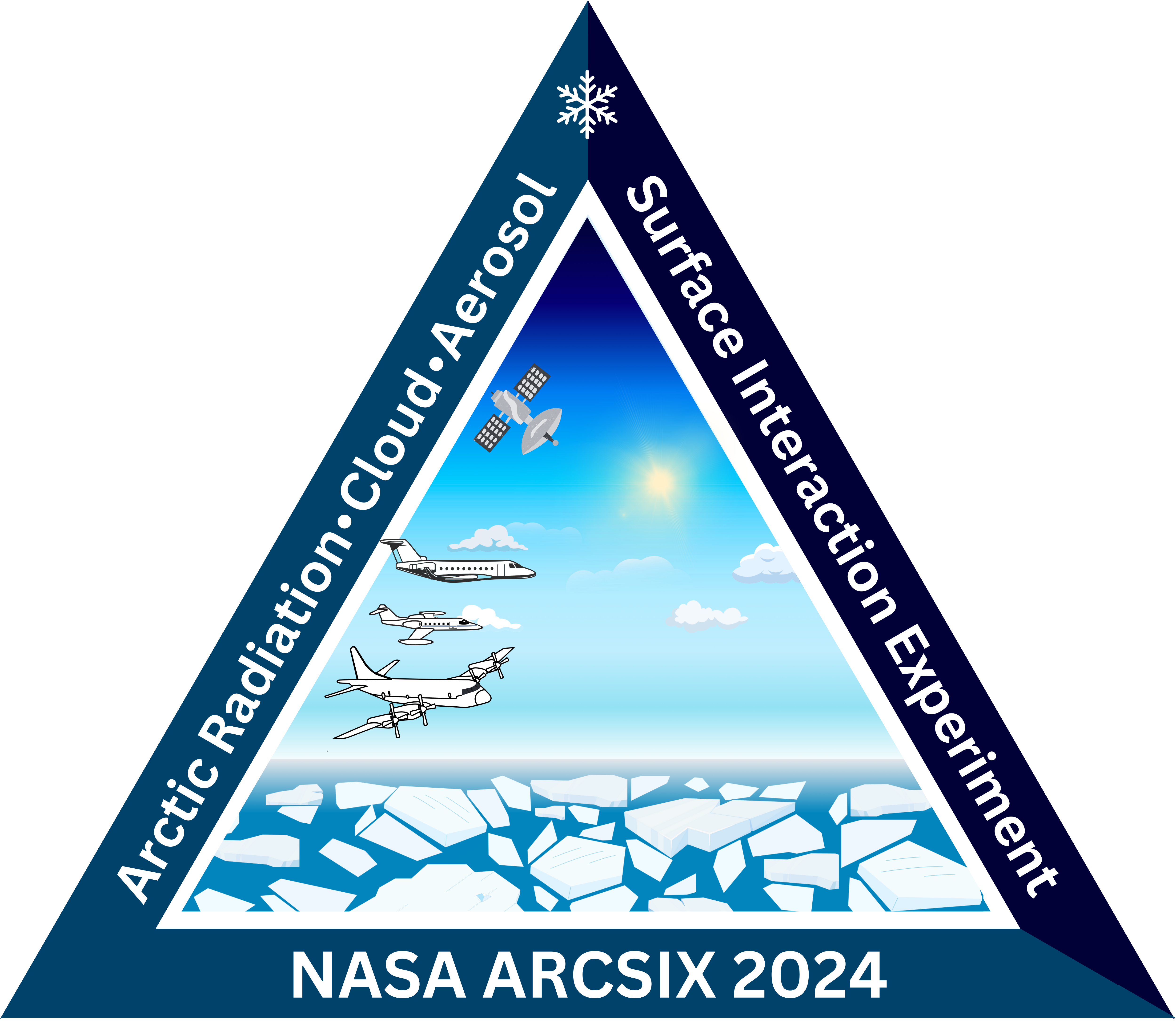Imagery and videos are published at: https://lasp.colorado.edu/data/store/airs/arcsix/
NASA ARCSIX: https://espo.nasa.gov/arcsix/
EaR³T (Education and Research 3D Radiative Transfer Toolbox) recommended for downloading satellite data: https://github.com/hong-chen/er3t
This repository is the processing pipeline for visualizing satellite imagery in near real time specifically tailored to the Arctic for the NASA ARCSIX 2024 Aircraft Campaign. Note that this is a tool meant for flight planning and decision making, and not meant to be used as a scientific data set.
conda create --name arcsix --file conda_requirements.txt
conda activate arcsix
pip3 install -r pip_requirements.txt
git clone https://github.com/vikasnataraja/arcsix-satellite.git && cd arcsix-satellite
Tested with Python 3.10.14 on RedHat Enterprise Linux 8.
conda can be notoriously slow on different OS. Try other channels on conda or try pip instead. If none of those work, grab a coffee and let conda do its thing:-)
Note that downloading satellite files (MODIS and VIIRS) is not a part of this repository and assumes the user already has them downloaded. It is recommended to use EaR3T to download satellite files. Visit that page, set up a separate environment in a different directory. Once setup of EaR3T is complete, run sdown (EaR3T Documentation).
This repository expects the following file structure:
some_dir
├── arcsix-satellite
│ ├── data/
│ ├── *.py
│ ├── output/
| │ ├── viz_region_1/
│ │ │ ├── true_color/
│ │ │ ├── false_color_721/
│ │ │ ├── false_color_367/
│ │ │ ├── false_color_ir/
│ │ │ ├── false_color_cirrus/
│ │ │ ├── water_path/
│ │ │ ├── ice_path/
│ │ │ ├── optical_thickness/
│ │ │ ├── cloud_phase/
│ │ │ ├── cloud_top_height_temperature/
│ │ ├── viz_region_2/
│ │ │ ├── true_color/
│ │ │ ├── false_color_721/
│ │ │ ├── false_color_367/
│ │ │ ├── false_color_ir/
│ │ │ ├── false_color_cirrus/
│ │ │ ├── water_path/
│ │ │ ├── ice_path/
│ │ │ ├── optical_thickness/
│ │ │ ├── cloud_phase/
│ │ │ ├── cloud_top_height_temperature/
│ │ ├── ...
├── er3t
│ ├── sat-data/
│ │ ├── region_1/
│ │ | ├── 2024-06-20
│ │ | ├── 2024-06-21
│ │ | ├── ...
│ │ ├── region_2/
│ │ | ├── 2024-06-20
│ │ | ├── 2024-06-21
│ │ | ├── ...
arcsix-satellite/output/ is an example directory that will be created after the run and will contain all the Level 1 and Level 2 visualized png outputs.
Put on your Nike Air Max and assuming that the above folder structure is implemented and that the satellite files are in the appropriate directories (sat-data), run the following command:
python3 visualize_satellites.py --fdir /path/to/some_dir/er3t/sat-data/region_1 --outdir /path/to/some_dir/arcsix-satellite/output/viz_region_1/ --mode lincoln --nrt --ndir_recent 1 --buoys /path/to/some_dir/arcsix-satellite/data/buoys/buoys.json
As of July 4, 2024:
Average time taken for downloading and producing 10 different kinds of L1 and L2 imagery per overpass = 3 minutes
Vikas Nataraja, Laboratory for Atmospheric and Space Physics, Dept. of Atmospheric and Oceanic Sciences, University of Colorado Boulder
Hong Chen, Laboratory for Atmospheric and Space Physics, University of Colorado Boulder
Sebastian Schmidt, Laboratory for Atmospheric and Space Physics, Dept. of Atmospheric and Oceanic Sciences, University of Colorado Boulder
Some of the functionalities, particularly in arctic_gridding_utils.py, have been adapted from EaR3T.
L1b and L2 data is downloaded from the NASA LAADS and LANCE DAACs.
This work utilized the Alpine high performance computing resource at the University of Colorado Boulder. Alpine is jointly funded by the University of Colorado Boulder, the University of Colorado Anschutz, and Colorado State University.
Data storage supported by the University of Colorado Boulder ‘PetaLibrary’.
Public server link created and maintained by the Laboratory for Atmospheric and Space Physics at the University of Colorado Boulder.
